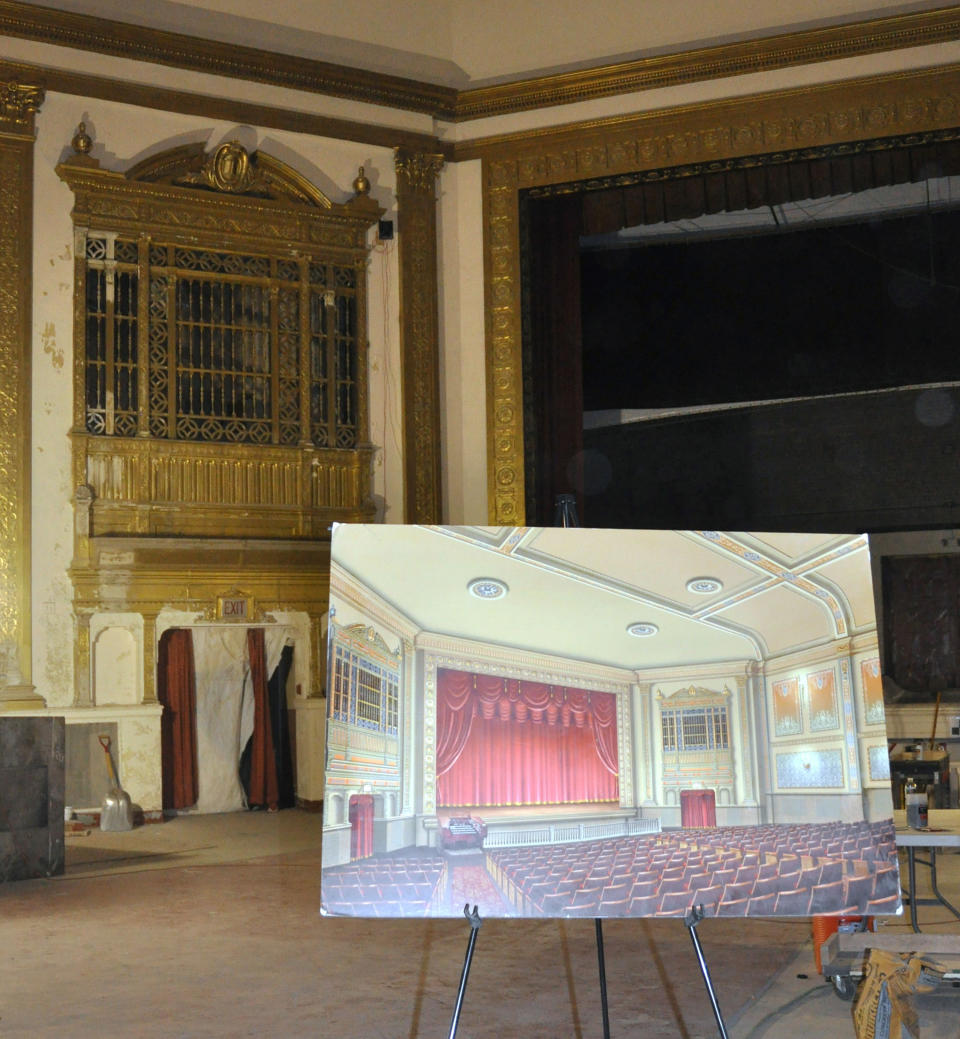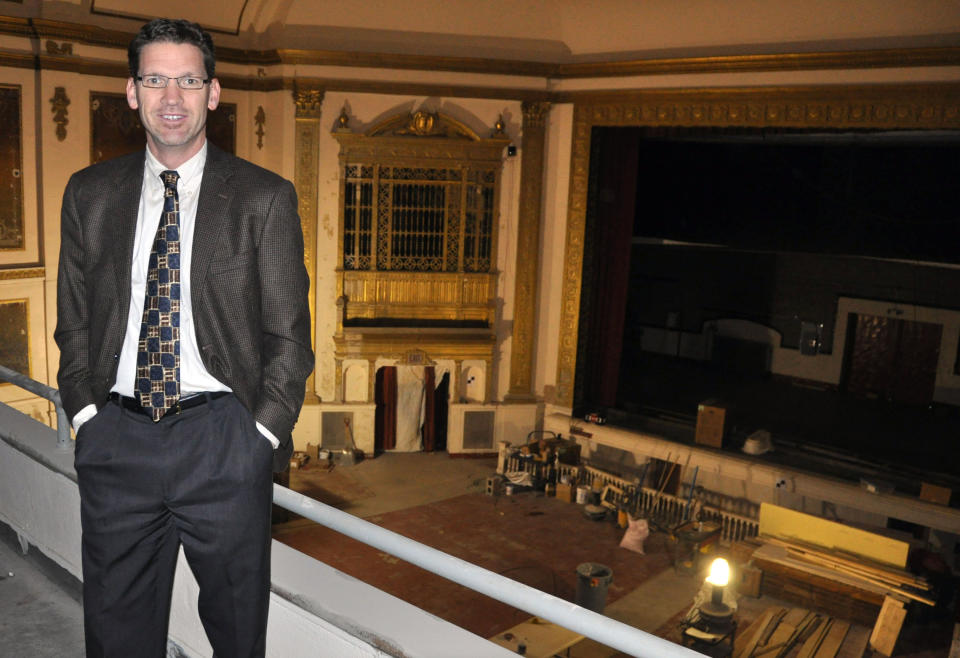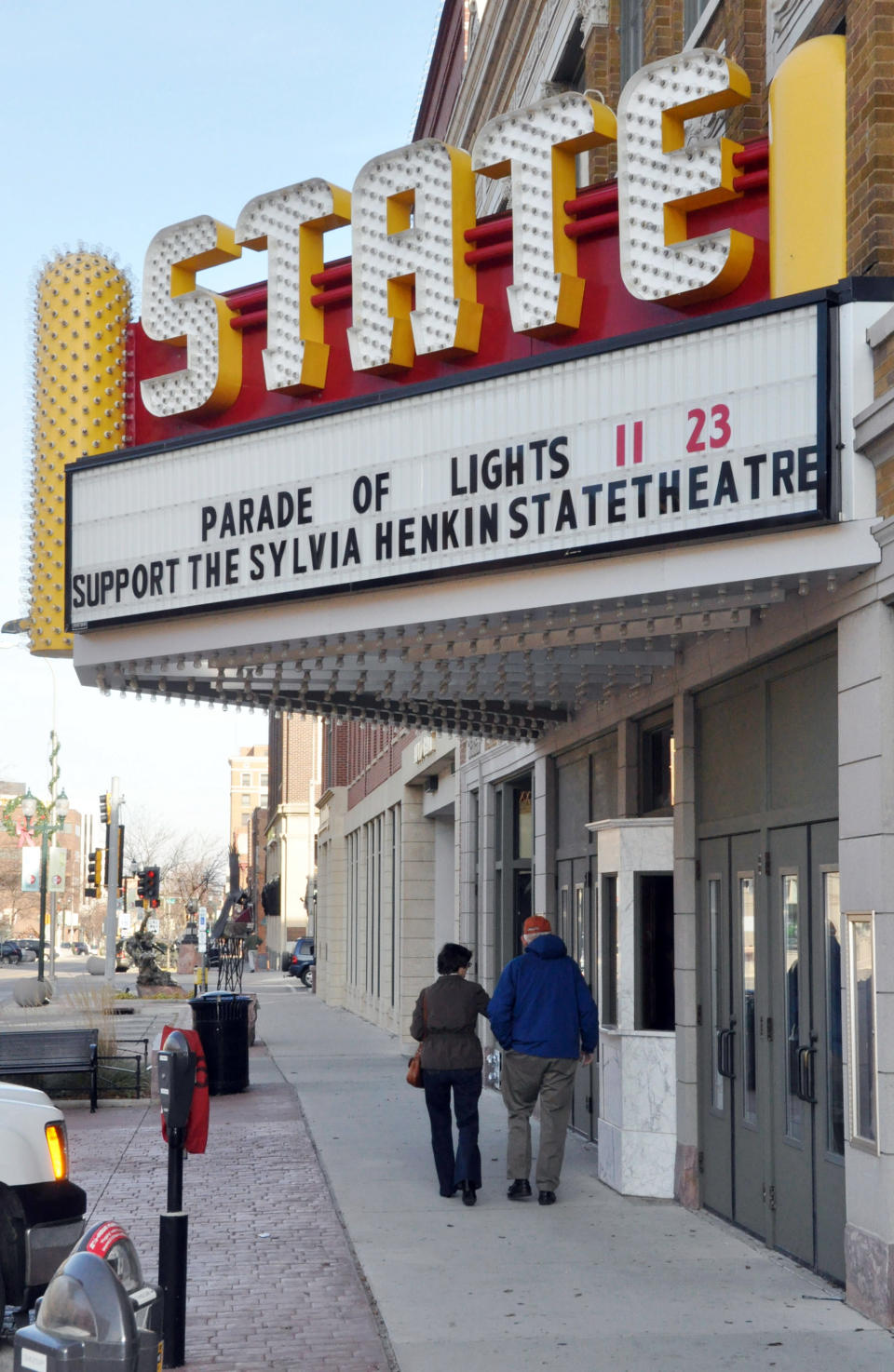1926 SD theater, dark since '90s, nears reopening
SIOUX FALLS, S.D. (AP) — Downtown Sioux Falls in its heyday was home to seven movie theaters, but filmgoers since the early 1990s have been heading to the malls to sit in front of a big screen.
Those longing for the old days will get their chance to go retro next year with the long-awaited reopening of the State Theatre, a circa-1926 vaudeville and silent movie house that for the past decade has been undergoing a slow but steady multimillion-dollar renovation.
"It's a landmark," said 91-year-old Sylvia Henkin, whose family donated $500,000 to the project. "Every kid that had a dime would go down there and see a cartoon or a movie, and they brought first-class, first-run shows there."
Crews are working to transform the newly renamed Sylvia R. Henkin State Theatre into a "historically preserved theater with all the modern amenities," said executive director Stephen Williamson.
While visitors will be sitting in an auditorium restored to the crimson-and-gold Beaux-Arts look from 1926, they'll be looking at a high-definition, digital projection surrounded by thundering high-fidelity sound.
The facade's facelift is complete, the marquee illuminates South Phillips Avenue each evening and the reconstructed lobby is ready for concessionaires. Crews have upgraded the heating, air conditioning and plumbing throughout the three-story concrete and steel building, which is as structurally sound as a bomb shelter.
The theater will return in 2013 with just the main level open, seating about 400 people. The 350-seat balcony will likely open sometime in 2014, and there's no target date for reconstruction of the theater's original Mighty Wurlitzer organ, Williamson said.
A complete restoration of the detailed stenciling that adorns the walls and ornamentation around the towering organ pipe chambers will take more time. Much of the stenciling was either covered with paint or drilled out to attach aesthetically displeasing acoustic tile, but artists will have original photos from which to work.
"The stencil work alone will take years to redo," Williamson said.
The State will screen first-run films during the summer and holiday seasons, when blockbusters are typically released, but focus on art house and indie films the rest of the year while hosting an occasional small-venue concert.
Williams said the State has a relatively small stage, so it will leave plays to Sioux Falls' other arts venues — the Orpheum Theatre on the north end of Phillips Avenue and the city's main performing arts center, the Washington Pavilion.
Such a historical centerpiece can anchor a small Midwestern city's downtown, said Emily Beck, executive director of North Dakota's Fargo Theatre, a sister cinema that opened in 1926 just 13 days after the State.
"I think it's incredibly important for the artistic identity of a community to have a theater like this that they can call their own — that isn't just some sort of big-box, corporate theater showing the next 'Twilight' film," Beck said.
Though the Fargo Theatre sports an Art Deco style that harkens back to how it looked in 1937, it and the State share much in common. Both were designed by St. Paul, Minn., architects Buechner and Orth for the firm of Finkelstein and Ruben, which operated nearly 90 theaters in North Dakota, South Dakota, Minnesota, and Wisconsin.
The theaters' Wurlitzer organs, which in that era provided the soundtrack and sound effects for silent films, are just one serial number apart.
Fargo's downtown gem, however, was closed for just eight months in the late 1990s while it underwent its $2.6 million renovation.
Residents of Sioux Falls who were seeing businesses flee downtown in favor of newer retail centers wondered if their historic theater would ever reopen.
"Downtown Sioux Falls was dead — moribund — and rigor mortis had set in," Henkin said. "The multiplexes came out to the malls and that took the place. I'm sure television had a lot to do with it, too."
After the State closed around 1990, the building was bought by private owners who held onto it for about a decade. The Sioux Falls Film Society bought the property in 2001 and sunk more than $400,000 into the beginning stages of restoration.
"They put a new roof on it, which really saved the facility," said Stacy Newcomb-Weiland, board president of the nonprofit Sioux Falls State Theatre Co.
The organization, which took over ownership in 2007, raised enough money to fix the facade at a cost of $250,000, but that just restored the structure as an historic building.
"They were looking at selling the building to a business that was going to tear the theater part of it out," Newcomb-Weiland said. "I decided to try to form a group of people to turn it into a theater again."
Downtown's Phillips Avenue is once again a bustling strip, and the nonprofit since 2007 has raised about $2.5 million, putting about $1.5 million of it into reconstruction. The lobby's completion last fall has helped donors see progress, which is bringing in more donations.
Among the State's more interesting features is a heavy steel stage door that sits on the back wall at railcar height. It once allowed vaudeville acts to pull up by train, unload their stuff on stage to perform and then load back up before heading to the next town.
Another mysterious door on the lower level opens to a cinder-blocked wall, but it once served as a gateway to a downtown tunnel system. The tunnels allowed stars to sneak between their hotels and the theater under the radar of fans and untouched by the Upper Midwest's harsh winter weather.
An upstairs apartment that sits behind the balcony just under the project room once housed the theater manager, but it will soon be turned into a beer and wine lounge, Williamson said.
Henkin, who watched "Gone With the Wind" at the State, said she can't wait to help out at the popcorn stand when the regal theater makes its second debut.
"It was just criminal to see that thing closed," she said. "Now, that is going to make the whole downtown come even more alive than it was."




